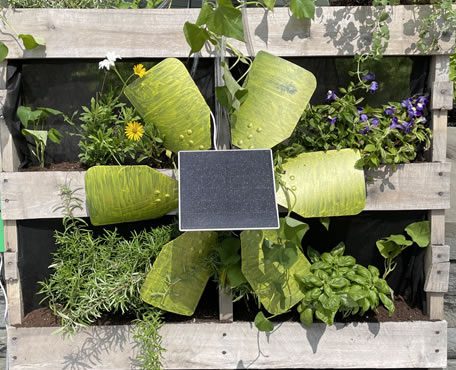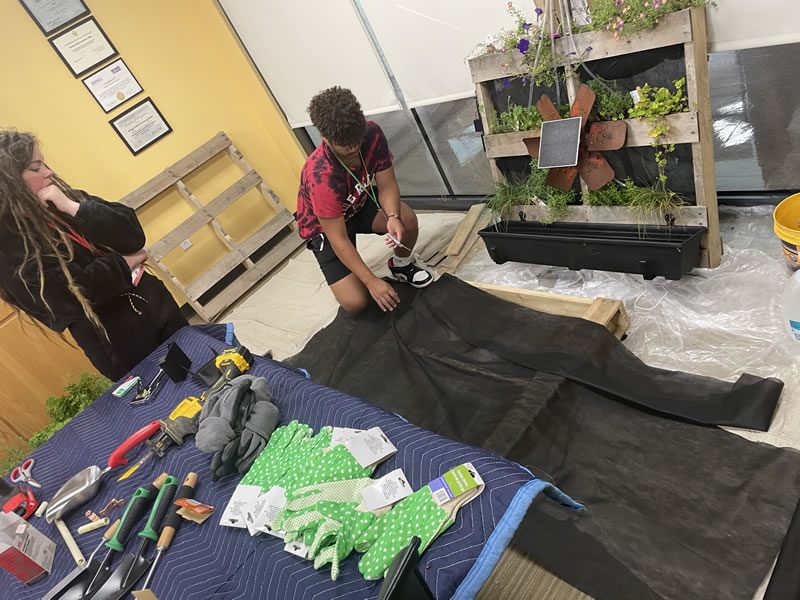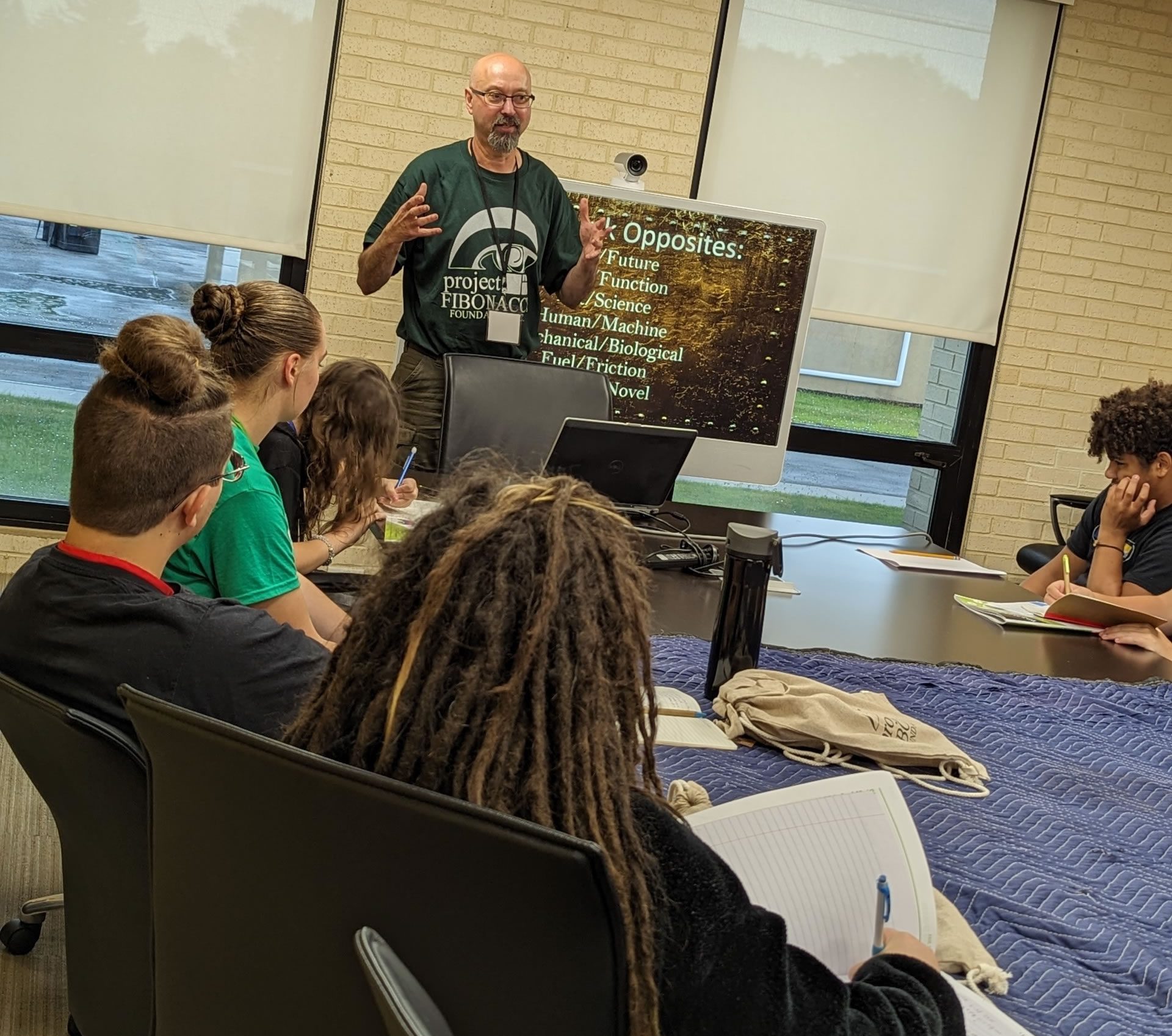

The 5th Annual Project Fibonacci STEAM Leadership Conference tackles
climate – Bruce Rosenbaum invited as special workshop presenter and keynote speaker for opening ceremony.
A recurring theme in Bruce’s Steampunk art is Janusian (or opposite) thinking to creatively solve problems.
Named after the Roman god Janus who had two faces looking in opposite directions, Janusian thinking involves the ability to simultaneously hold two opposing ideas or perspectives in one’s mind and find a solution that reconciles the contradictions.
This type of thinking could be helpful in solving complex challenges like climate change by promoting creative and innovative approaches.
So, it was naturally a fitting concept to bring to this year’s STEAM scholars whose week in Rome, NY was focused on the theme of adapting to climate change and sustainability as it applies to protecting the planet, its oceans, and the global population.
STEAM scholars are conference attendees who immerse themselves in an impactful theme presented by Project Fibonacci – hearing firsthand from experts and educators who are well versed in a particular field of study. The 2023 conference was held from
July 23 – 29.
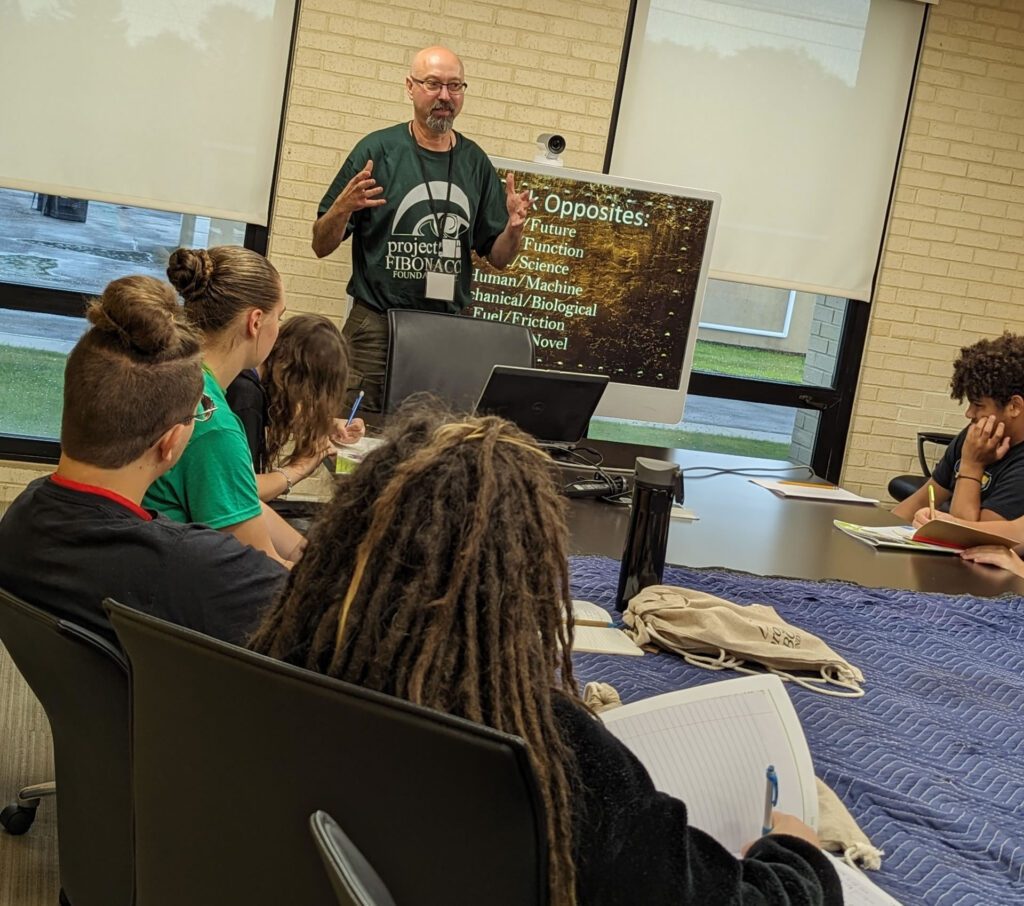
“It was a pleasure to have Bruce’s insights and perspective on our topic this year,” said Tamalin Martin, Conference Co-Chair for The Project Fibonacci® Foundation. “With so many intense, academic presenters, we found bringing the artistic element of Steampunk was refreshing – and helped everyone think outside of the box.”
Bruce created this year’s special workshop to demonstrate how Steampunk art can fuse facets of STEAM with history, invention, and innovation.
After tying Steampunk in with the
concept of using divergent
thinking to creatively solve small
and large scale (climate change)
problems, STEAM scholars
worked in teams to design and
build a self-sustaining natural
vertical garden integrating a
mechanical solar powered
‘Sunflower’ that can pump water
to the garden’s plants and foliage.


The Janusian “challenge”
presented to the teams was twofold: First, the need to address climate change by increasing carbon capture – represented by the plants which naturally absorb carbon from the atmosphere. And second, to reduce the use of fossil fuels – addressed by the use of renewable solar energy to run the irrigation system.


Throughout the process, teams were encouraged
to embrace the contradictions, explore diverse viewpoints, and
combine opposing solutions if possible. As a
result, this approach helped to foster
collaboration between STEAM scholars.
For more information about the Project Fibonacci Foundation and its annual STEAM
Leadership Conference, go to www.projectfibonacci.org or email asingletary@projectfibonacci.org about next year’s theme on artificial intelligence, smart machines, and the human factor.
“We collected feedback surveys from all of this year’s STEAM scholars,” said Barb Welch, Volunteer Coordinator with AndroMetaX. “Clearly for those who were lucky enough to attend Bruce’s workshop it was the best part of the entire week – I heard one scholar tell her parents it was the best group project EVER!!”






STEAM scholars worked together: From design concept to assigning specific roles for building the garden structure and wiring the electronics and solar irrigation pump to laying out the garden plants for maximum growth and productivity.
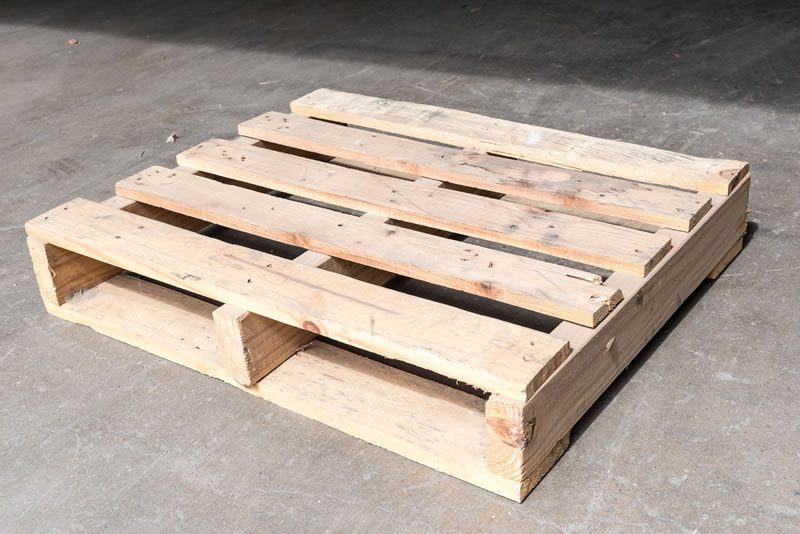

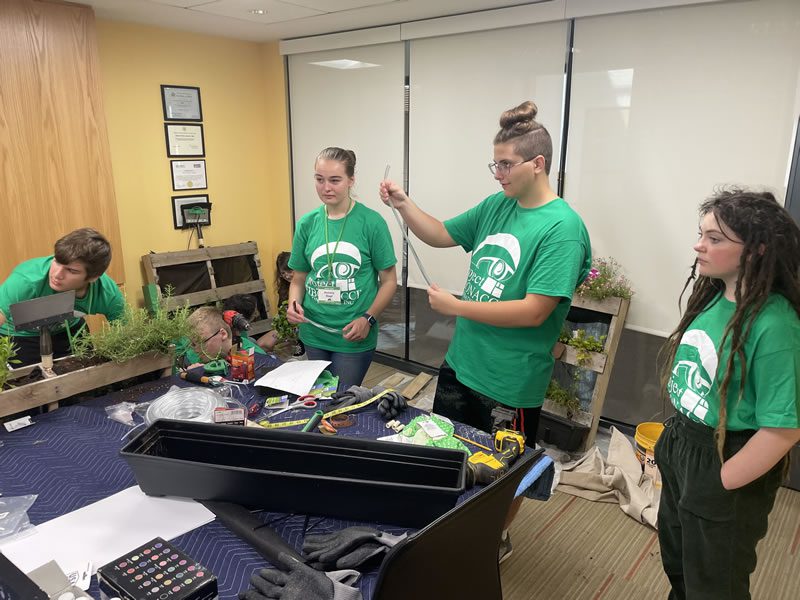





Workshop teams started with a “blank” pallet.
After an initial discussion of background,
objectives, and requirements – STEAM scholars
supported each other throughout the process.
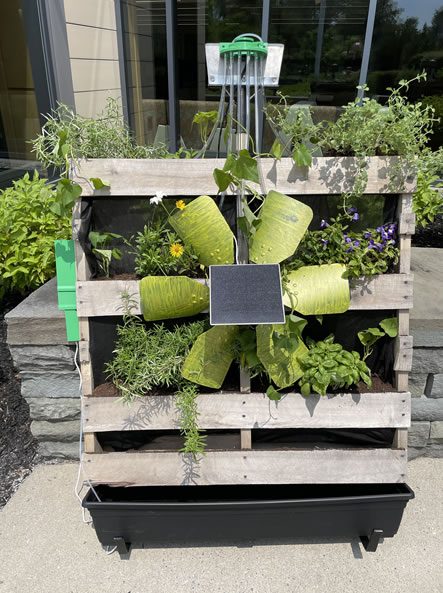

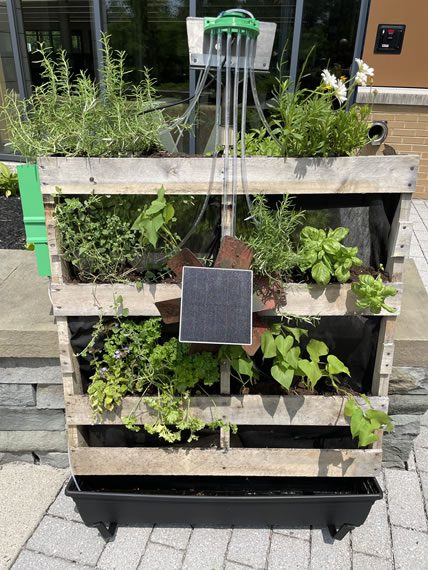

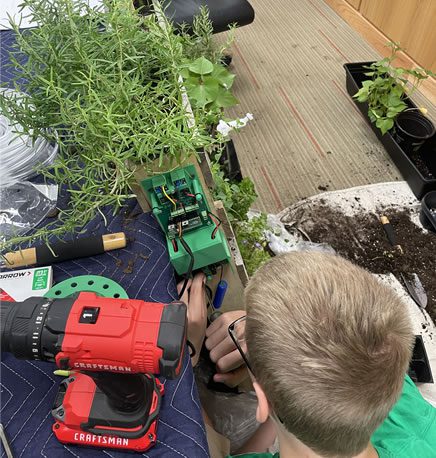

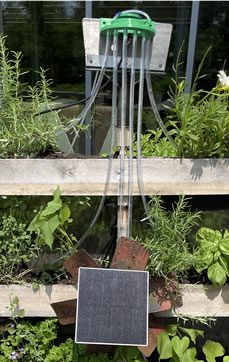



Bruce Rosenbaum was the keynote speaker at the conference’s opening ceremony on July 23.




